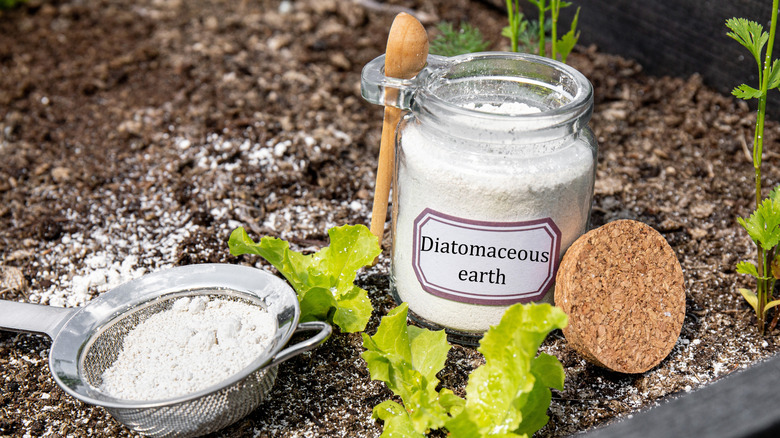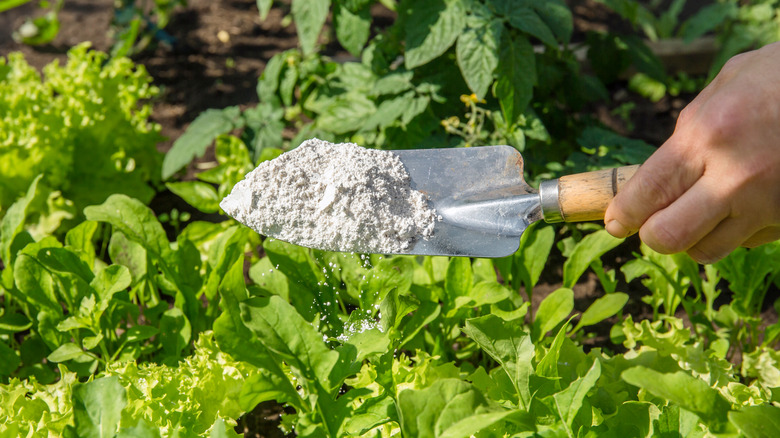Why You May Want To Think Twice Before Using Diatomaceous Earth In Your Garden
If you consider yourself an organic gardener, you've probably heard about diatomaceous earth (DE). It's often praised as a natural garden staple that'll become your secret to controlling ants, slugs, and other crawling pests. But before you start dusting your plants and soil with the stuff, it's worth asking: What is diatomaceous earth and what is it used for? Diatomaceous earth is a fine powder made from fossilized aquatic organisms called diatoms. Under a microscope, its particles are sharp and jagged — deadly to bugs with exoskeletons but harmless to humans and pets (or so it seems). Diatomaceous earth might be a go-to natural pest control method, but it can harm pollinators like bees and butterflies, and it doesn't always work, especially after rain or watering.
The real appeal lies in its "natural" label. Many gardeners see it as a safer alternative to chemical pesticides. However, natural doesn't always mean risk-free. When dry, DE works by physically cutting into the insect's body, drying them out. But here's the catch: it doesn't discriminate. It'll harm beneficial insects too — like pollinators – which can upset the balance of your garden's ecosystem. Plus, it only works when dry. The minute it rains, or your garden gets watered, its effectiveness drops dramatically. You'll need to reapply it constantly, which may not be practical or cost-effective for larger gardens, not to mention exhausting.
Diatomaceous earth harms pollinators and only works in some conditions
While it might be tempting to rely solely on this powdery fix-all, there are important things to consider when using diatomaceous earth for pest control. First and foremost, it's not just pests that get harmed — bees, butterflies, and predatory bugs that protect your plants naturally are also at risk. This means your attempts at eco-friendly pest control could backfire, leaving your garden more vulnerable in the long run.
There are also health and environmental concerns. Diatomaceous earth is made of silica, and while food-grade versions are generally safe for humans, inhaling the dust over time can irritate your lungs, especially if you're applying it often in windy conditions. Plus, it's messy. The white powder tends to stick around on leaves and soil, making your tidy garden look chalky and unkempt.
Lastly, overreliance on DE can create a false sense of security. Many gardeners assume it's a set-it-and-forget-it solution, but pest management is more complex. DE doesn't affect insects in their egg stage, so infestations can bounce back quickly if you're not rotating methods. So, while diatomaceous earth has its place, it's not the miracle product it's often made out to be. We're not saying don't use it — just use it wisely, with full awareness of the potential drawbacks.

